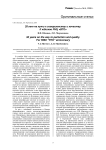Оригинальные статьи. Рубрика в журнале - Гений ортопедии
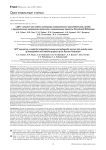
Статья научная
Введение. В год юбилейных дат двух национальных ведущих центров травматологи и ортопедии авторы проанализировали основные проблемы и современные вызовы к профильной помощи. Исторические параллели развития профильной ТО помощи в нашей стране, проблемы и тренды развития за рубежом мотивировали авторов на проведение анализа, а необходимость их сравнительной оценки определили цель работы - краткий анализ организационной модели профильной ТО помощи и обоснование «3ДТ»-концепта как современной организационной модели травматолого-ортопедической службы в РФ. Результаты и обсуждение. Анализ современных трендов травматолого-ортопедической службы показал ее изменчивость в течение последних трех десятилетий при сохранении практически исходной организационной структуры профильной помощи. Современная сравнительная оценка организационных моделей показала, что модели оказания профильной помощи в развитых странах крайне разнообразны. Доступность помощи не зависит от населенности и тарификации в регионах даже развитых стран. Кроме того, денежная оценка лечения, к примеру, патологии позвоночника, не стандартизирована и не согласована между странами и регионами. Также важно оценивать неуклонное повышение технологичности помощи с применением более современных систем диагностики, лечения, реабилитации и, соответственно, повышения ее стоимости. Вызовы, стоящие перед нашей специальностью, можно условно разделить на технические, социально-экономические и организационные с необходимостью создания четкой вертикальной структуры организации, контроля и маршрутизации пациентов с организационными решениями по селекции пациентов ТО профиля по потокам в рамках различных направлений субспециальности, необходимостью обоснования и обратного контроля систем финансирования различных видов ТО помощи. Описанные выше вызовы мотивировали предложить новый «3ДТ» организационный концепт как основу для более устойчивой и понятной населению модели функционирования национальной травматолого-ортопедической службы. Предлагаемая базовая модель выделяет 4 сектора-направления: Д1 («Детские» болезни костно-мышечной системы и их исходы); Д2 (дегенеративная и инволютивная патология костно-мышечной системы); Д3 (деструктивные заболевания опорно-двигательного аппарата опухолевого или инфекционного происхождения); Т (травма костно-мышечной системы и ее последствия), имеющие принципиально разные подходы к организации и планированию. Основным требованием к модели является ее простота с возможностью применения для всех участников, напрямую или косвенно задействованных в оказании помощи: травматологов-ортопедов, врачей других специальностей, органов власти и финансовых институтов, пациентов, их родственников и пациентских сообществ. Заключение. Преимущества модели «3ДТ» заключаются в возможности экстраполяции этого концепта на любой регион Российской Федерации с учетом различия их ресурсов, а интегральным критерием ее результативности будет являться оценка развития этих направлений в целом, а не отдельных видов помощи. В каждом секторе необходимо обозначить базовый, дополнительный и факультативный объем помощи. Все регионы должны иметь базовый уровень, а возможность государственного финансирования дополнительной и, тем более, факультативной помощи не может осуществляться без обеспечения базового.
Бесплатно
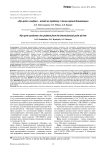
"Hip-spine" синдром - взгляд на проблему с точки зрения биомеханики
Статья научная
Актуальность. Реализация компенсаторных механизмов пояснично-тазового комплекса при сочетанных дегенеративно-дистрофических изменениях остается малоизученной проблемой. В многочисленных публикациях, как правило, есть изолированные данные либо с позиции патологии позвоночника, либо с позиции поражения тазобедренного сустава. Цель. Оценка изменений параметров позвоночно-тазового сагиттального баланса у пациентов с «Hip-spine» синдромом. Материалы и методы. Проанализированы 2 группы пациентов с «Hip-spine» синдромом: 1) «Hip-spine» группа - (n = 54) и 2) «Spine-hip» группа (n = 66). Всем пациентам производилось лучевое обследование: рентгенограммы позвоночника с захватом головы и тазобедренных суставов в передне-задней и боковой проекциях в положении стоя. Результаты. В первой группе - Hip-Spine (54) - отмечалось положение таза в пределах нормальной антеверзии либо присутствовала гиперантеверзия таза. Во второй группе - Spine-Hip (66) - выявлено наличие ретроверзии таза и лишь в единичных случаях сохранение нормального положения таза (без компенсаторного его отклонения)...
Бесплатно
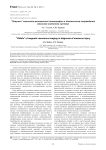
"Ловушки" магнитно-резонансной томографии в диагностике повреждений менисков коленного сустава
Статья научная
На основе сравнительного анализа магнитно-резонансных томограмм коленного сустава представлена визуализация нормальных анатомических внутрисуставных структур, симулирующих повреждения менисков, от истинных патологических состояний.
Бесплатно
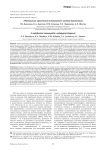
"Многоликий" хронический остеомиелит: лучевая диагностика
Статья научная
Введение. Анализ литературы и собственные данные свидетельствуют о разнообразных по протяженности и степени выраженности изменений структуры кости при хроническом остеомиелите, определение границ которых представляет значительные сложности. Цель. Провести анализ протяженности очага и глубины нарушения структуры кости методом МСКТ при различных типах остеомиелита и вариантах его локализации. Материалы и методы. Исследование ретроспективное, одноцентровое. У 235 больных хроническим остеомиелитом методом полипозиционной рентгенографии и мультисрезовой компьютерной томографии (МСКТ) изучены особенности рентгеноморфологии бедренной и большеберцовой костей с количественной оценкой плотности различных участков кости. Результаты. Наиболее частой локализацией хронического остеомиелита был диафиз бедренной (33) и большеберцовой костей (52). Причиной остеомиелита во всех случаях была травма или операция. У 14 больных в результате длительно протекающего заболевания сформировался ложный сустав или дефект кости. Анализ данных МСКТ показал, что анатомические изменения бедренной и большеберцовой костей при хроническом остеомиелите были индивидуальны у всех пациентов. Что касается рентгеноморфологических проявлений, то они складывались из общих симптомов (остеопороз, остеосклероз, нарушение архитектоники), однако выраженность, протяженность и характер изменения структуры были крайне разнообразны, так же как и изменение плотности кости с большим отклонением. Заключение. Полученные данные свидетельствуют о том, что «визуальная реальность» в диагностике хронического остеомиелита связана с компьютерной томографией, позволяющей определять протяженность и характер изменений кости, детализировать разнообразные изменения анатомии и архитектоники, свидетельствующие о «многоликости» хронического остеомиелита.
Бесплатно
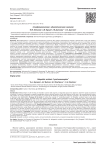
"Синдромокомплекс" идиопатического сколиоза
Статья научная
Введение. Многофакторность этиологии идиопатического сколиоза (ИС) требует комплексного подхода к диагностике, тогда, как правило, объем обследования больных ограничивается рентгенографией, компьютерной томографией без детального анализа полученных данных о состоянии опорно-двигательной системы. В литературе проблема комплексной диагностики ИС практически не освещена, так же как и синдромальный подход к обоснованию метода лечения и реабилитации. Цель. Определить понятие «синдромокомплекс» идиопатического сколиоза на основе изучения современными методами диагностики состояния позвоночника, мышц, проксимального отдела бедренной кости, минеральной плотности костной ткани (МПКТ), минерального обмена и костного метаболизма. Материалы и методы. Методом мультисрезовой компьютерной томографии (МСКТ) и магнитно-резонансной томографии (МРТ) изучено состояние позвоночника (300 больных), проксимального отдела бедренной кости (57 больных), паравертебральных (40 больных) и ягодичных мышц (60 больных основной группы и 40 - контрольной), методом денситометрии - МПКТ (40 больных основной и 40 - контрольной), минеральный обмен и костный метаболизм изучены биохимическими методиками у 55 больных ИС. Результаты и обсуждение. Изучение у больных идиопатическим сколиозом разного возраста и с различной величиной деформации определенных отделов опорно-двигательной системы выявило выраженные нарушения формы позвонков, в том числе увеличение фронтального диаметра, клиновидность со значительным отличием плотности по выпуклой и вогнутой сторонам, структурные изменения позвонков, проявляющиеся в уменьшении плотности, наличии зон разрежения, участков максимальной плотности на вершине деформации, гипотрофию и жировое перерождение паравертебральных и ягодичных мышц, снижение МПКТ, уменьшение плотности головки бедренной кости, нарушение минерального обмена и костного метаболизма. Заключение. Выраженные нарушения формы, рентгеноморфологические изменения позвонков, гипотрофия и жировое перерождение паравертебральных и ягодичных мышц, сопутствующие изменения МПКТ, тазобедренного сустава, минерального обмена и костного метаболизма, входят в понятие «синдромокомплекс идиопатического сколиоза», лежат в основе тактической концепции для диагностики, лечения и дальнейших реабилитационных мероприятий больных с тяжелыми формами сколиоза.
Бесплатно
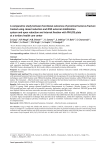
Статья научная
Introduction Proximal humerus fractures account for 5 % of all fractures. Their incidence increases with age, especially in women over 60. Most of them (85 %) are minimally displaced and managed non-operatively, while 15 % require surgery. Neer’s classification guides treatment, which includes conservative methods and operative methods. The operative techniques are PHILOS plating, pinning, nailing, or arthroplasty. The JESS fixator, developed by Dr. B.B. Joshi, offers a minimally invasive alternative. Purpose To compare the functional results of proximal humerus fractures treated with PHILOS plating and JESS fixation. Material and method The prospective observational study was conducted over 24 months on 36 patients with proximal humerus fractures. Patients were divided into two groups, 18 in each group, based on the surgical technique used: JESS fixation and PHILLOS plating. JESS group had more females, while PHILOS had more males. The Constant – Murley Scores were used to compare the functional outcome in both groups at regular intervals. Complications of both techniques were assessed. Results Falls were the main cause in JESS (72.22 %), while road accidents were more common in PHILOS (55.55 %) group. Both groups showed significant improvement in Constant – Murley Scores (p < 0.005). JESS group had one case each of avascular necrosis, malunion, and pin tract infection. PHILOS group had one implant failure and one avascular necrosis case, both managed effectively. Conclusion In the management of proximal humerus fractures, JESS fixation and PHILOS plating are equally effective. This study also led us to the conclusion that JESS fixation for proximal humerus fractures is a semi rigid, inexpensive technique that permits early mobilization, needs few implants, requires a short hospital stay and surgical period, resulting in good to excellent functional results with a minimal risk of complications.
Бесплатно
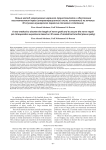
Статья научная
Purpose: to compare the result of using a stay stitch to bridge the nerve gaps with repair the nerve gap without using a stay stitch, to compare both ways on the length of graft, number of grafts and number of cables per graft. Methods: a comparative study between 2 groups of babies with OBPP in which each group consists of 15 infants. In all the patients in both groups, neuroma excision and nerve grafting was indicated. In group (A) the defects were measured directly after neuroma excision without any attempts to approximate the retracted ends of the nerves, this was followed by reconstruction of the gaps by cable grafts from the sural nerves using fibrin glue. Conversely, in group (B) we took measurements of the defects after using 1 or 2 bridging stay sutures through the posterior aspect of the epineurium just to overcome the retracted distance without any further tension on the nerve. This also was followed by reconstruction of the gaps by cable nerve grafts with the aid of fibrin glue. Results: in group (B), the cable grafts length can be shortened from (29.6mm to 14.2 mm) with average of (15.4 mm). The number of cables per graft increase from 2.2 to 3.2. The number of grafts used in reconstruction of the brachial plexus were more in group B than in group A. Conclusions: A simple bridging stay suture can prevent retraction of the nerve ends after repair with fibrin glue, working as an internal splintage to the repair site, decrease the length of the cable graft, increase the number of cables per graft, gives more opportunity to make more nerve grafts and the surgeon feel that his repair is more secure.
Бесплатно

Статья научная
Purpose: to compare the result of using a stay stitch to bridge the nerve gaps with repair the nerve gap without using a stay stitch, to compare both ways on the length of graft, number of grafts and number of cables per graft. Methods: a comparative study between 2 groups of babies with OBPP in which each group consists of 15 infants. In all the patients in both groups, neuroma excision and nerve grafting was indicated. In group (A) the defects were measured directly after neuroma excision without any attempts to approximate the retracted ends of the nerves, this was followed by reconstruction of the gaps by cable grafts from the sural nerves using fibrin glue. Conversely, in group (B) we took measurements of the defects after using 1 or 2 bridging stay sutures through the posterior aspect of the epineurium just to overcome the retracted distance without any further tension on the nerve. This also was followed by reconstruction of the gaps by cable nerve grafts with the aid of fibrin glue. Results: in group (B), the cable grafts length can be shortened from (29.6mm to 14.2 mm) with average of (15.4 mm). The number of cables per graft increase from 2.2 to 3.2. The number of grafts used in reconstruction of the brachial plexus were more in group B than in group A. Conclusions: A simple bridging stay suture can prevent retraction of the nerve ends after repair with fibrin glue, working as an internal splintage to the repair site, decrease the length of the cable graft, increase the number of cables per graft, gives more opportunity to make more nerve grafts and the surgeon feel that his repair is more secure.
Бесплатно
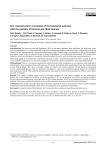
Статья научная
Introduction The anterior cruciate ligament (ACL) is the main ligament that stabilizes the knee and stops anterior translation. It is also essential to the screw-home mechanism and helps resist valgus and rotational stress. For ACL reconstruction, autograft arthroscopic single-bundle surgery is regarded as the "gold standard" procedure. Joint laxity is enhanced and cartilage degradation is avoided with anatomical ACL restoration. Negative results are frequently caused by technical surgical errors, such as improper tunnel placement. This study aims to evaluate the functional outcome in ACL-reconstructed patients when a graft is placed in an anatomical position, as well as to compare it with when a graft is placed in a non-anatomical place. Methodology This is a 24-month prospective observational study conducted on 44 patients who underwent arthroscopic ACL reconstruction, with post-op CT scans performed after permission from the institutional review board (IRB). The most common mode of injury was sports-related. Thirty patients belonged to the anatomical group, and 14 patients belonged to the non-anatomical group based on inclusion and exclusion criteria. The Lysholm scoring system was used for functional evaluation on follow-up at three, six, and 12 months. Results The mean Lysholm score was 41.24 before surgery for the entire sample. In the anatomical group, the score improved to 80.91 at three months, 85.91 at six months, and 89.23 at twelve months. In the non anatomical group, the score was 58.58 at three months, 65.13 at six months, and 58.58 at twelve months. The improvement in Lysholm scores in the anatomical group was statistically significant. Conclusion This study concludes that the functional outcome of ACL reconstruction is better when the graft is placed in anatomical footprints than when it is placed in non-anatomical footprints.
Бесплатно
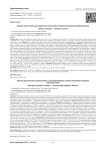
Analysis of the results of surgical and conservative treatment of humeral condyle fractures
Статья научная
Introduction Fractures of the humeral condyle make up 0.5-5.0 % of all fractures and about 30.0 % of adult elbow fractures. Complications develop in 18.0-85.0 % of cases and 29.9 % of the injured have signs of disability, giving these fractures a reputation of injuries with a poor prognosis for functional recovery. Objective To improve the treatment results of the injured with humeral condyle fractures by developing differential treatment tactics taking into account the biomechanical characteristics of the injured anatomical structures. Material and methods The authors analyzed the results of conservative and surgical treatment of 194 patients with fractures of the humeral condyle. The average age of the patients was 50.2 years (range from 19 to 89 years); there were 75 (38.7 %) males and 119 (61.3 %) females. Based on the method of treatment, the patients were divided into 2 groups, each group included a control subgroup and the results of treatment were analyzed. The main subgroup of the clinical group 1 (surgical treatment) consisted of 99 patients with an average age of 49.1 years (range from 19 to 85 years). There were 49 (49.5 %) men and 50 (50.5 %) women. The control subgroup of the clinical group 1 (surgical treatment) consisted of 41 patients with an average age of 51.4 years (from 21 to 89 years). There were 17 (41.5 %) men and 24 (58.5 %) women. The main subgroup of the clinical group 2 (conservative treatment) consisted of 29 patients with an average age of 51.2 years (from 21 to 88 years). There were 5 (17.2 %) men and 24 (82.8 %) women. The control subgroup of the clinical group 2 (conservative treatment) consisted of 25 patients with an average age of 52.9 years (from 21 to 87 years). There were 4 (16.0 %) men and 21 (84.5 %) women. The fractures were rated according to the AO classification: type 13A - 15 (7.7 %) individuals, type 13B - 40 (20.7 %) subjects and type 13C - 139 (71.6 %) patients. Results The mean duration of follow-up was 39.0 ± 1.0 months (7 to 48 months from injury). The mean range of motion in the elbow joint was 110.5 ± 1.2º (50º to 140º), the mean score on the Mayo clinic scale was 81.7 ± 0.9 (45 to 100), and on the Score Scale was 62.7 ± 0.7 (38 to 76). Excellent functional results were obtained in 95 (49.0 %) patients (p function show_abstract() { $('#abstract1').hide(); $('#abstract2').show(); $('#abstract_expand').hide(); }
Бесплатно
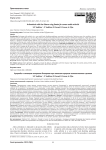
Arthrodesis with the Ilizarov ring fixator for severe ankle arthritis
Статья научная
Introduction End-stage ankle arthritis is a very painful and disabling pathology, associated with deformity. Infection, poor skin condition, chronic smoking, Charcot arthropathy may not only affect selection of treatment method but also union, leading to unfortunate amputation. Ankle arthrodesis is indicated in advanced ankle arthritis. A variety of fixation methods are available for arthrodesis ranging from internal to external fixation. The Ilizarov ring fixator is a dynamic versatile fixation method. It is a biomechanically stable and minimally invasive method which promotes bone union and has advantage of initiating early weight-bearing and simultaneous deformity correction. We describe our experience in Ilizarov ring fixator application for ankle arthrodesis in 5 patients with severe ankle arthritis and their functional outcome. Materials and Methods This retrospective study was conducted in 5 ankle arthrodesis cases using the Ilizarov ring fixator application from July 2021 to October 2022 in the department of orthopaedics, Jaipur national university, India. Average age of patient was 52 years (range, 40-65). Among included patients one patient had chronic osteomyelitis of the distal tibia and severe arthrosis of the ankle joint with a non-healing ulcer, two patients had post-traumatic arthrosis following talus and distal tibia plafond fracture, Charcot ankle arthropathy and tuberculosis of the ankle joint was detected in two patients respectively. Postoperative pain relief, deformity correction and radiological union at the fusion site were defined as success. Results Fusion was achieved in all patients (100%). Early post-operative ambulation and full weight-bearing was initiated in every case. Pin-tract infection was the commonest complication. Shortening due to arthrodesis was less than 2.5 cm so limb lengthening was not done. Frame removal time was 12 to 14 weeks (average time, 13 weeks). Visual analogue scale was used in all cases. It was in the range of 2 to 3 points preoperatively and 7 to 9 post-operatively after arthrodesis. Average follow-up period was 6 months and it is still underway. AOFAS score was used for functional assessment. Conclusion Ilizarov ring fixator application can be considered as versatile, biomechanically stable, minimally invasive method for ankle arthrodesis in severe ankle arthritis associated with poor soft tissue condition, posttraumatic arthritis, infection, deformity, bone loss, Charcot arthropathy
Бесплатно
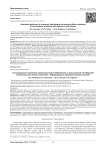
Статья научная
Introduction The problem of varus deformed knee joint osteoarthritis remains one of the actual topics of modern adult orthopedics. The use of many well-known methods of surgical interventions and arthroscopic technology are not rational in terms of restoring the biomechanical axis of the lower limb. The purpose of the research Analysis of the results of arthroscopic debridement and the use of proximal fibular osteotomy (PFO) in the treatment of varus deformed knee osteoarthritis. Materials and investigation methods Our study included a survey of 152 patients with deforming osteoarthritis of I-II-III degree and varus deformity of the knee joint, dividing them into 2 groups: Group I (control) consisted of 131 patients who underwent debridement of the articular surface. Group II (main) consisted of 19 patients with debridement and PFO developed in our clinic. The analysis of the achieved results was assessed on the basis of indicators of the KSS scale. Results The results of the surgery in both groups were reviewed comparatively at 1 year after surgery by KSS scale data with results:
Бесплатно
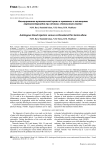
Autologous blood injection versus corticosteroid for tennis elbow
Статья научная
Goal. Compare the effectiveness of injections of autologous blood and injections of corticosteroids in the treatment of "tennis elbow." MATERIALS AND METHODS. 25 men and 35 women (mean age 35.2 years) with a "tennis elbow" were randomized for injections or autologous blood (2 ml of autologous venous blood mixed with 1 ml of 2% xylocaine hydrochloride) or a steroidal preparation of triamcinolone acetonide (1 ml - 40 mg, mixed with 1 ml of 2% xylocaine hydrochloride), which one surgeon did. We evaluated before (0 day) and after (after 15, 30, 60 days) treatment for the presence of pain in the elbow, the function and strength of flexion in the joint. The presence of pain in the elbow joint was evaluated after one year. Results. Infections, tendon ruptures and neurovascular damage were not identified. Five patients reported pain for up to three days after the injection of autologous blood. In both groups, the flexion force improved dramatically after treatment, but the recovery process was different. Compared with injections of autologous blood during the injection of a corticosteroid drug, the recovery occurred more quickly in the first 15 days, and then slightly slowed down to the 60th day. After the introduction of autologous blood, pain relief, function and flexion strength were steadily improved and eventually became more sophisticated. The conclusion. In comparison with injections of a corticosteroid drug, injections of autologous blood were more effective with a long period of control in terms of relief of pain, restoration of function and flexion strength. This is how we recommend this first-order injection technique, because it is simple enough, inexpensive and more effective.
Бесплатно
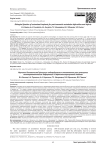
Biological fixation of customized implants for post-traumatic acetabular deformities and defects
Статья научная
Introduction The number of surgical interventions using additive technologies in medicine has been growing both in Russia and with every year. Due to the development of printing customized implants, the use of standard (imported) designs has decreased by an average of 7 % in the provision of high-tech medical care. However, the issue of the pore size of customized implants for management of post-traumatic defects in the acetabulum remains open.Objective To evaluate the results of the treatment of patients with post-traumatic acetabulum defects and deformities with the implementation in clinical practice of customized implants with structure and size porous surface that are optimal from the point of view of biological fixation.Material and methods Porous implants with different types of porous structure were produced by direct laser sintering using Ti-6Al-4V titanium alloy powders. Experimental work was carried out in vitro to determine the ability of living fibroblasts to penetrate the pores of different sizes. Next, the clinical part of this study was conducted in order to determine the signs of biological fixation of customized acetabular implants in a group of patients (n = 30).Results The results of this experiment performed to analyze the penetration of living fibroblasts into the porous structure of implants with different pore size demonstrated that metal structures with a pore size of 400-499 μm can be singled out from all others. Discussion Analysis of the literature data shows that there is no consensus on the structure and size of the pores of a customized implant. In our work, we investigated the ability of human living fibroblasts to penetrate into the surface structure of a customized implant, as a result of which we determined their optimal pore size of 400-499 microns. It should be noted that this study was conducted for a definite anatomical location: the acetabulum. However, it cannot be excluded that the data obtained are relevant for other anatomical locations.Conclusion Management of bone defects in the acetabulum area with customized implants featuring the surface pore size of 400-499 microns is a justified and relevant method. A prerequisite for the use of such implants is strict compliance with the indications for their use, careful preoperative planning and correct positioning.
Бесплатно
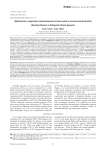
Bleeding diseases in orthopedic clinical approach
Статья научная
Aim Bleeding diseases are rarely studied as complications of an orthopedic surgical procedure with postsurgical bleeding. This study aims to present a retrospective cohort-study about the approach to bleeding disorders in an ordinary orthopedic clinic. Material and Methods 344 patients were recorded for our study group between November 2017 and September 2019. These patients were monitored for bleeding disorders, both primary or secondary. Results 27 (7.84 %) patients with bleeding diseases [1 (0.29 %) patient with VWD, 1 (0.29 %) patient with hemophilia, 1 (0.29 %) patient with ITP, 15 (4.36 %) patients with drug use, 5 (1.45 %) patients with vascular disorders, 4 (1.16 %) patients with herbal agent use] were detected in all traumatic cases which were admitted to our clinic in this time period . These patients were divided in 6 groups. Patient with VWD was Group 1, patient with hemophilia was Group 2, patient with ITP was Group 3, patients with drug use formed Group 4, patients with vascular disorders - Group 5, patients with herbal agent use - Group 6. Conclusion We advise to have a careful preoperative control for postsurgical bleeding risks according to three criteria: i) patient anamnesis should be studied carefully (diathesis/hemophilia searching), ii) platelet counts must be checked (twice is guaranteed), iii) coagulation tests [activated partial thromboplastin time (aPTT), prothrombin time (PT), thrombin time (TT) and International Normalized Ratio (INR)] must be studied.
Бесплатно

Статья научная
Background Management of bone defects with autologous bone grafting has always been the "gold standard" but it is not always possible to use it for a number of reasons. Preprocessed materials of biological and non-biological origin were developed as an alternative. A new branch of these materials is tissue-engineered constructs that fully imitate autologous bone in required volume.Aim is to study in vivo the possibility of using deproteinized human cancellous bone tissue as a matrix for creating tissue-engineered constructs.Methods The study was carried out on 24 NZW line rabbits, since this line has a fully characterized stromal-vascular fraction formula (SVF). The study design included 3 groups. First group (control) had surgical modeling of bone defects in the diaphysis of the contralateral femur without reconstruction; Group 2 had bone defect reconstruction using fragments of a deproteinized cancellous bone graft; group 3 underwent bone defect reconstruction using fragments of deproteinized cancellous bone matrix along with the autologous adipose tissue SVF (obtained according to ACP SVF technology). Animals were sacrificed with ether anesthesia at 2, 4 and 6 weeks after the operation and subsequent histological study followed.Result During all periods of the study, the newly formed bone tissue volume density in the 3rd group (reconstruction with deproteinized human cancellous bone + stromal-vascular fraction) was 1.78 times higher (p function show_abstract() { $('#abstract1').hide(); $('#abstract2').show(); $('#abstract_expand').hide(); }
Бесплатно
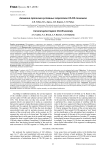
Cervical spine tropism CII-CIII anomaly
Статья научная
Study Design. 3 patients with CII-CIII tropism anomaly and unilateral subluxation were investigated and treated. Objectives. To demonstrate clinical and CT findings in children with the new anomaly in CII-CIII junction. Summary of Background data. A thorough in vivo research of CII-CIII junction became possible only after introduction of modern CT scanning technologies. We have not managed to find other clinical observations of this segment pathology in children in contemporary medical literature. Methods. We determined not typical cases of acute wryneck from the group of 262 children hospitalized in our clinic. X-ray and CT scans were used for evaluation of the problem. Results. From the group of patients with acute stiff-neck we selected three with the following symptoms: neck blocked and movement not possible; head advanced forward. On the lateral X-ray scans there were a cervical lordosis straightening and the pars interarticulares of the CII were overridden by the processus articularis superior of the CIII. The CT-scan of the cervical spine showed a unilateral subluxation of the CII segment in the forward direction. The articulation planes of the CII-CIII facets had different orientation on the left and right sides. Conclusion. We propose the hypothesis that non-symmetrical orientation of the articulation facet planes in the CII-CIII segment can cause a stiff-neck syndrome in children. In the described cases, the sole detected source of the pain syndrome and blocked neck was the tropism anomaly in the CII-CIII segment accompanied by a subluxation of the joint.
Бесплатно
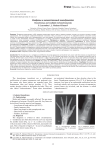
Chondromas and multiple enchondromatosis
Статья научная
Introduction The chondromas are a cartilaginous proliferation of mature appearance and moderate size, reason why these tumors are regarded more like hamartomas than real benign tumor. Chondromas represent 10 to 12 % of benign bone tumors. Any bone of an enchondral ossification may be involved. Several bones can be involved, and the disease is called “chondromatosis”. In the review we describe clinical and radiological findings of this pathology as well as indications for reconstructive surgery. Material and methods The review is dedicated to isolated chondromas, periosteal and extraskeletal chondromas, chondromatosis. Results The aspects of epidemiology, clinical presentation, radiology, MRI, prognosis, indications and methods of surgical treatment have been described in the article for each types of chondroma and enchondromatosis. Conclusion Chondromas are benign bone tumors which may be responsible of pathologic fractures. Their surgical treatment consists in curettage and bone grafting or bone-cement filling with or without osteosynthesis. Multiple enchondromatosis should be considered as an osteochondrodysplasia. Its treatment is not the treatment of the multiple chondromas themselves, but of the bone deformities and length discrepancy induced by the disorder. The transformation of some tumors in chondrosarcomas in adolescence or adulthood needs a strict follow up of these patients.
Бесплатно
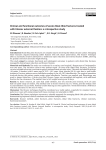
Статья научная
Introduction Distal tibia pilon fractures are complex injuries involving the tibial articular surface. Managing these fractures requires balancing stable fixation with soft tissue preservation. The Ilizarov technique offers a minimally invasive alternative to traditional open reduction and internal fixation (ORIF), allowing for gradual correction and early weight bearing. This study aimed to evaluate functional and radiological outcomes in patients with distal tibia fractures managed by limited open reduction and Ilizarov fixation. Materials and Methods The study was conducted in a tertiary care hospital's Department of Orthopaedics over two years. The inclusion criteria were patients aged >18 years with distal tibia fractures. Exclusion criteria included refracture, previous surgeries, and associated vascular injury. The study included 20 patients (18 males, 2 females) with a mean age of 39.2 ± 10.5 years. Most injuries (80 %) were due to road traffic accidents. Fracture patterns were classified according to the AO-OTA classification. The surgical procedure involved placing the patient supine under spinal anesthesia. Traction was applied, and fluoroscopy was used to assess reduction. A three-ring tibial Ilizarov frame was assembled and applied, with additional fixation for the calcaneum. The median time to full weight bearing was 26 days. Results At frame removal, all cases had ankle stiffness, but two months post-removal, 85 % of cases had full ankle range of motion. The median time to frame removal was 17.5 weeks, and the median time to consolidation was 22 weeks. Patellar tendon bearing cast was applied for 3 weeks followed by a PTB brace with foot extension for the next 4 weeks. Discussion The Ilizarov technique should be considered as a viable option, especially for complex fracture patterns or cases with compromised soft tissue envelopes not amenable to ORIF. Conclusion The Ilizarov technique represents a valuable approach for managing distal tibia pilon fractures, demonstrating improved clinical outcomes and minimal complications.
Бесплатно

